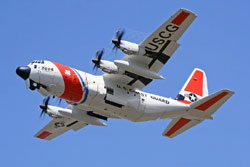|
|
 |

|
 |
 |
The C-130 Emergency Flight Scenario
Subsequent to the preflight and taxi and take off, subjects climbed to a cruising altitude as designated by the air traffic controller (ATC). As a peak performance exercise, the subject was instructed to return to the traffic pattern and execute a series of touch and go manuevers (one systems-normal, one simulated number on engine fire and one automatic direction finder instrument approach). Upon completion of these tasks the subject departed the pattern at an altitude assigned by the ATC for a search and rescue (SAR) case in which there wqs ostensibly a downed A-4 pilot approximately 20 miles off shore. In order to assess the subject's prformance and physiological response while experienceing a considerable stressor, a compounding emergency condition was simulated. Once the search pattern had been established, the cargo door opened and secured, and the aircraft had descended to 200 feet above ground level, a turbine overheat of the number two engine followed by an uncontained turbine failure of that engine was simulated. The subject was then notified by a confederte of simulated airframe damage, a minor fuel leak from the number two engine, and that a crew member had sustained injuries resulting presumably from shrapnel. This announcement was followed by left hand and Essential AC bus failure indicators. Moments later the instructor pilot communicated to the subject that there was simulated smoke (without fire) emanating from under the flightdeck, there was charring in the vicinity of the number one generator on the nacelle paint, the master fire light, T-handle, and a visable onfirmation revealed that the number one engine was on fire. Upon stabilizing the aircraft, the subject was directed to maintain a cruising altitude as instructed by the ATC, return to base and make a two engine full stop landing. This was further complicated by a simulated landing gear malfunction which required simulated manuel extension of the landing gear.

A C-130 Transport Aircraft Used In Search And Rescue by the Coast Guard
|
|
|